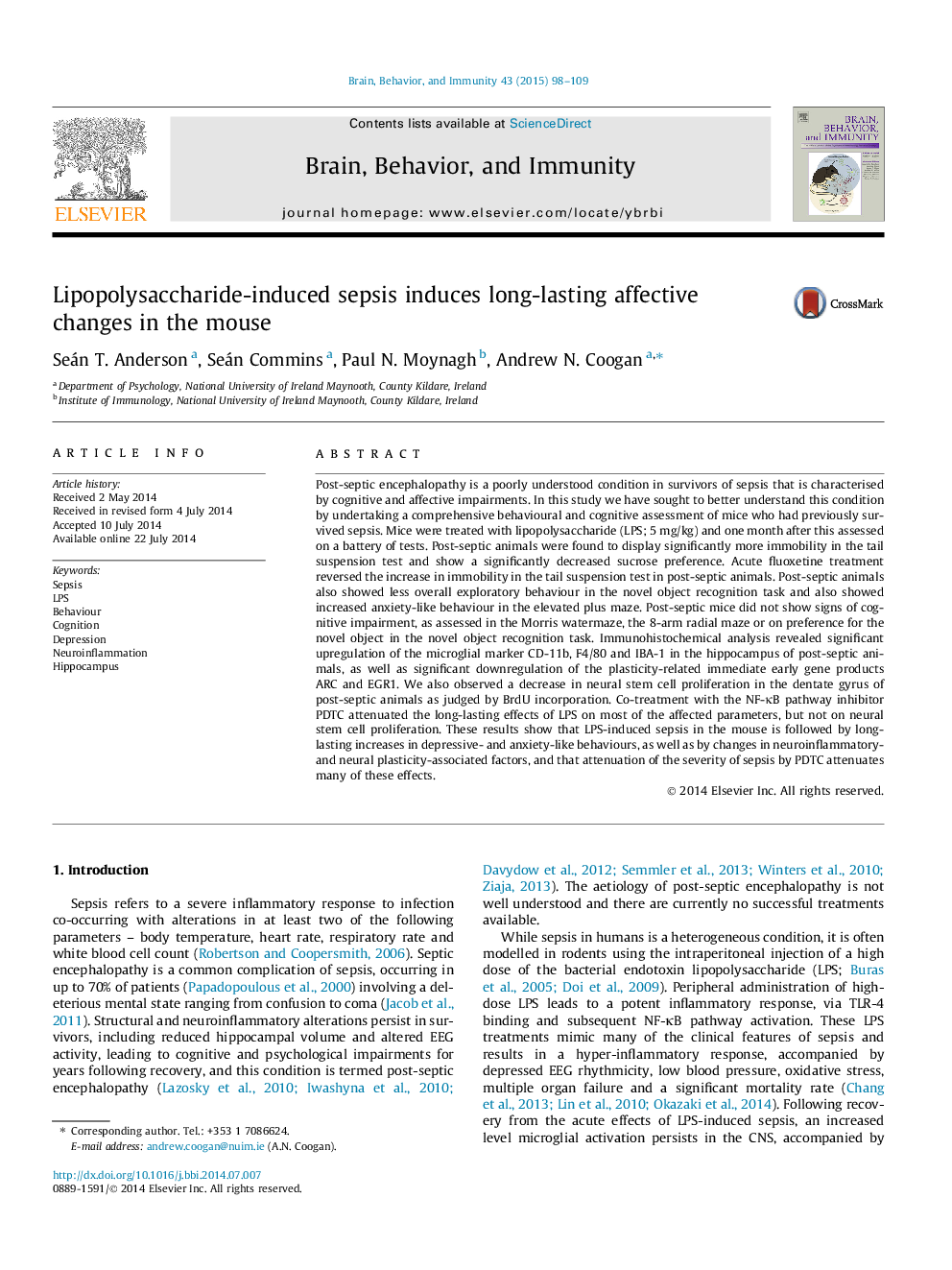| Article ID | Journal | Published Year | Pages | File Type |
|---|---|---|---|---|
| 7281414 | Brain, Behavior, and Immunity | 2015 | 12 Pages |
Abstract
Post-septic encephalopathy is a poorly understood condition in survivors of sepsis that is characterised by cognitive and affective impairments. In this study we have sought to better understand this condition by undertaking a comprehensive behavioural and cognitive assessment of mice who had previously survived sepsis. Mice were treated with lipopolysaccharide (LPS; 5 mg/kg) and one month after this assessed on a battery of tests. Post-septic animals were found to display significantly more immobility in the tail suspension test and show a significantly decreased sucrose preference. Acute fluoxetine treatment reversed the increase in immobility in the tail suspension test in post-septic animals. Post-septic animals also showed less overall exploratory behaviour in the novel object recognition task and also showed increased anxiety-like behaviour in the elevated plus maze. Post-septic mice did not show signs of cognitive impairment, as assessed in the Morris watermaze, the 8-arm radial maze or on preference for the novel object in the novel object recognition task. Immunohistochemical analysis revealed significant upregulation of the microglial marker CD-11b, F4/80 and IBA-1 in the hippocampus of post-septic animals, as well as significant downregulation of the plasticity-related immediate early gene products ARC and EGR1. We also observed a decrease in neural stem cell proliferation in the dentate gyrus of post-septic animals as judged by BrdU incorporation. Co-treatment with the NF-κB pathway inhibitor PDTC attenuated the long-lasting effects of LPS on most of the affected parameters, but not on neural stem cell proliferation. These results show that LPS-induced sepsis in the mouse is followed by long-lasting increases in depressive- and anxiety-like behaviours, as well as by changes in neuroinflammatory- and neural plasticity-associated factors, and that attenuation of the severity of sepsis by PDTC attenuates many of these effects.
Related Topics
Life Sciences
Immunology and Microbiology
Immunology
Authors
Seán T. Anderson, Seán Commins, Paul N. Moynagh, Andrew N. Coogan,
